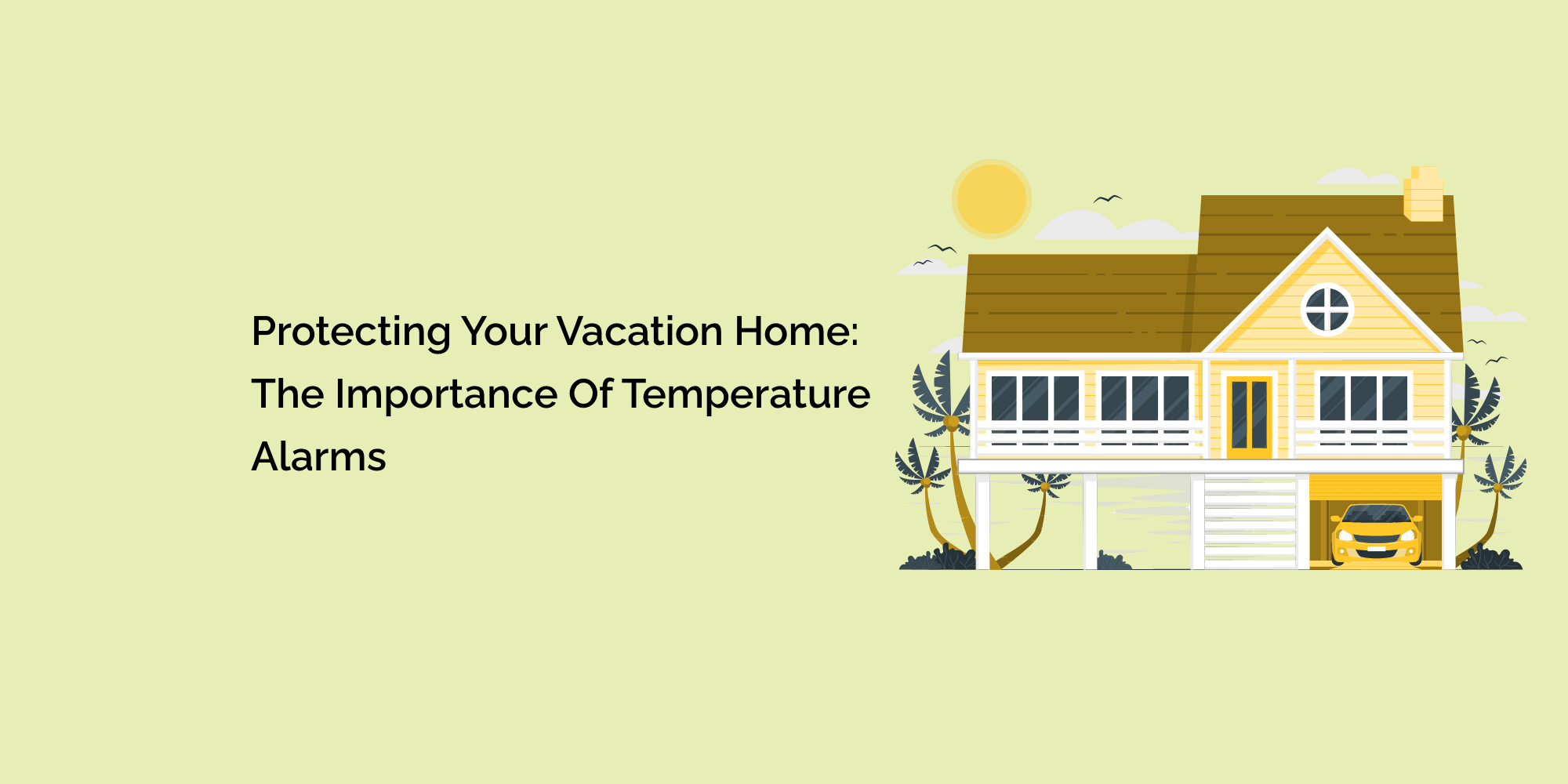Vacation homes are cherished retreats, providing a haven for relaxation and escape. However, when these homes are left unattended for extended periods, temperature fluctuations can pose a significant risk to the property and its contents. Whether it's extreme heat, freezing temperatures, or humidity levels, uncontrolled environmental conditions can cause damage to the structure and valuable possessions. This blog will explore the importance of temperature alarms in protecting your vacation home. We will discuss the risks associated with temperature fluctuations, the consequences of inadequate temperature control, and the benefits of implementing temperature alarm systems. By understanding the significance of temperature monitoring and timely interventions, homeowners can safeguard their vacation homes and enjoy peace of mind while away.
Risks Associated with Temperature Fluctuations
Temperature fluctuations in vacation homes can lead to various risks and potential damage. This section will explore the dangers of extreme heat, freezing temperatures, and high humidity. We will discuss how heat can cause furniture and electronic damage, cool temperatures can lead to burst pipes or structural issues, and high humidity can promote mold growth and deterioration of materials. Understanding these risks highlights the importance of temperature monitoring and control.
Consequences of Inadequate Temperature Control
Inadequate temperature control in vacation homes can result in costly consequences. This section will discuss the potential damages and problems that can arise from temperature fluctuations. These include warped or damaged wooden furniture, electronics malfunctioning due to overheating, water damage from burst pipes, mold growth on walls or furniture, and degradation of artwork or valuable collectibles. These consequences result in financial losses and disrupt the enjoyment of the vacation home.
Benefits of Implementing Temperature Alarm Systems
Implementing temperature alarm systems offers numerous benefits in protecting your vacation home. This section will discuss the advantages of temperature alarms, including early detection of temperature deviations, real-time monitoring and alerts, timely interventions, prevention of property damage, preservation of valuable possessions, and peace of mind for homeowners. With a reliable temperature alarm system, homeowners can proactively address temperature fluctuations and minimize potential risks.
Key Features and Functionality of Temperature Alarm Systems
Understanding the features and functionality of temperature alarm systems is crucial for making informed decisions. This section will explore the critical components of temperature alarm systems, including temperature sensors, controllers or data loggers, and alert mechanisms. We will discuss the importance of accurate temperature sensing, adjustable temperature thresholds, real-time monitoring, remote access capabilities, battery backup, and connectivity options. By considering these features, homeowners can select a temperature alarm system that best suits their vacation home needs.
Practical Tips for Effective Temperature Monitoring
In addition to implementing temperature alarm systems, there are practical tips that homeowners can follow to ensure adequate temperature monitoring in their vacation homes. This section will guide strategic sensor placement, setting appropriate temperature thresholds, regular maintenance and calibration, remote monitoring options, and integrating temperature monitoring with other home security systems. These tips will help homeowners optimize temperature control and protect their vacation homes.
Integrating Temperature Control Measures
Temperature alarm systems are just one part of a comprehensive approach to temperature control in vacation homes. This section will discuss integrating temperature control measures, such as programmable thermostats, HVAC systems, window treatments, insulation improvements, and intelligent home automation. By combining temperature alarm systems with these measures, homeowners can achieve optimal temperature regulation and energy efficiency in their vacation homes.
Cost Considerations and Return on Investment
Homeowners may wonder about the cost of implementing temperature alarm systems and the return on investment. This section will explore the cost considerations, including equipment costs, installation, and ongoing monitoring. We will highlight the potential savings and financial benefits of preventing property damage, avoiding repair or replacement costs, and preserving the value of valuable possessions.
Case Studies and Success Stories
To emphasize the effectiveness of temperature alarm systems, this section will present case studies and success stories from homeowners who have implemented these systems in their vacation homes. These real-life examples will showcase how temperature alarms have alerted homeowners to temperature fluctuations, enabling them to take timely actions and prevent property damage. These stories serve as testimonials of the importance of temperature alarms in protecting vacation homes.
Certainly! Here are some frequently asked questions (FAQs) about the importance of temperature alarms for protecting vacation homes:
What is a temperature alarm for a vacation home?
A temperature alarm for a vacation home is a monitoring system designed to track temperature levels within the property. It includes temperature sensors, controllers or data loggers, and alert mechanisms to provide notifications when temperature thresholds are exceeded or dropped below-desired levels.
Why are temperature alarms important for vacation homes?
Temperature alarms are essential for vacation homes because they help protect the property and its contents from temperature fluctuations. Extreme heat, freezing temperatures, or high humidity levels can cause damage to the structure, furniture, electronics, and valuable possessions. Temperature alarms provide early detection and alerts, enabling homeowners to take timely actions to prevent potential damage.
What are the risks associated with temperature fluctuations in a vacation home?
Temperature fluctuations in a vacation home can lead to various risks, including damaged furniture, malfunctioning electronics, burst pipes, mold growth, and degradation of artwork or valuable collectibles. These risks can result in financial losses and disrupt the enjoyment of the vacation home.
Conclusion
Temperature alarms are vital for protecting vacation homes and preventing damage caused by temperature fluctuations. By understanding the risks associated with temperature deviations, recognizing the consequences of inadequate temperature control, and implementing temperature alarm systems, homeowners can enjoy peace of mind knowing that their vacation homes are safeguarded. The benefits of temperature alarms include early detection, real-time monitoring, timely interventions, prevention of property damage, and preservation of valuable possessions. By incorporating temperature alarms into a comprehensive temperature control strategy and following practical tips for effective monitoring, homeowners can protect their vacation homes and ensure a worry-free experience when they are away. Investing in temperature alarm systems is an investment in the long-term protection and enjoyment of vacation properties.








